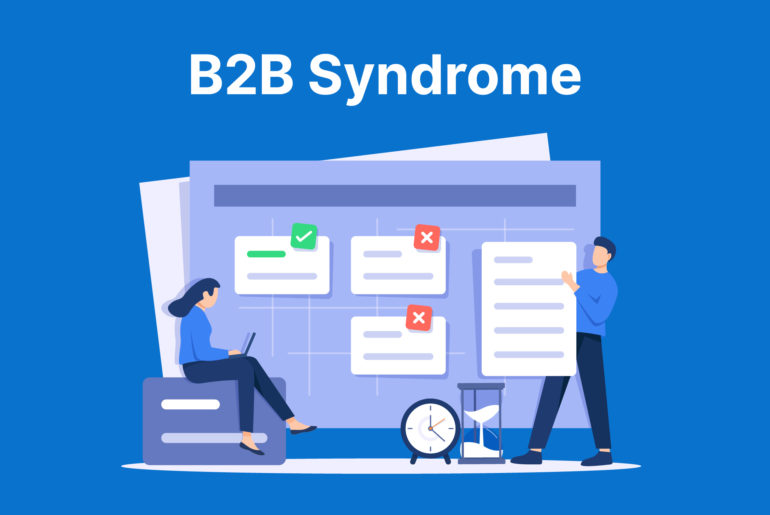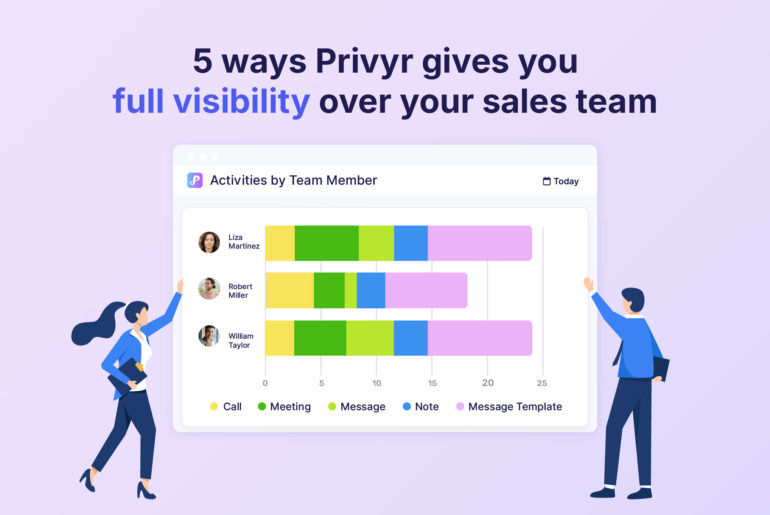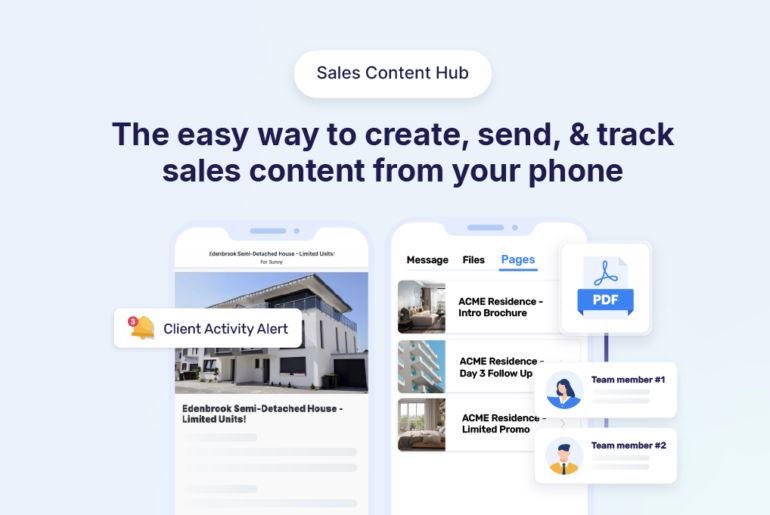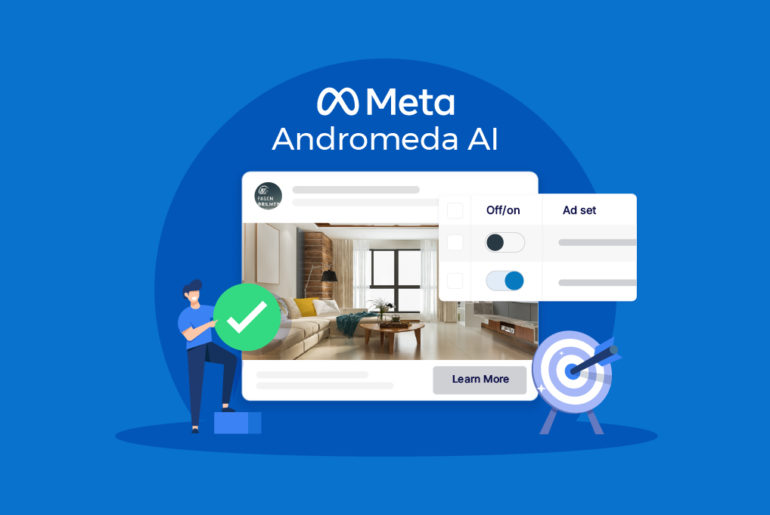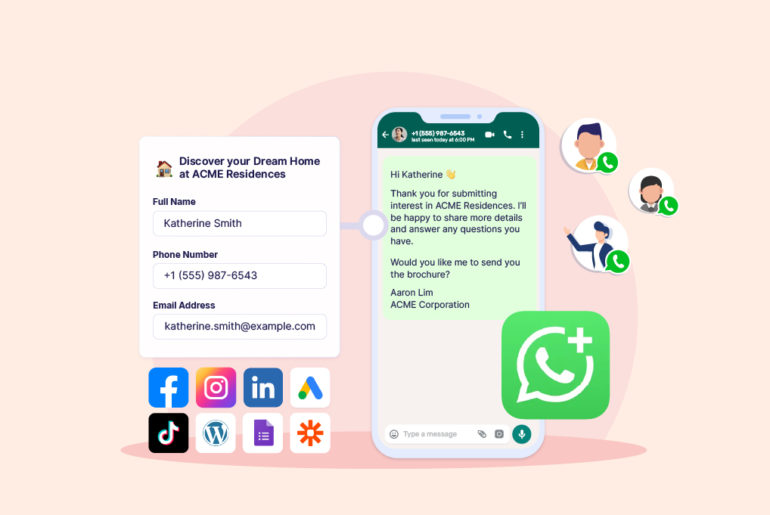You’re generating leads for your business through different channels. Doesn’t matter whether you’re receiving leads through referrals, website forms, or ads, whatever works for you is great. Your next step now is to convert leads into customers.
The sales funnel for B2B companies can be quite complicated as there are far more steps to go through before a sale. However, it’s not the case if you’re a consumer-facing sales professional or small business. Your lead conversion process is more straightforward and could be achieved in just 2 steps. That being said, it’s not always easy to get leads to move forward and become paying customers, but things can be different if you understand the buying phases of your leads.
In this article, we’ll discuss two important phases of B2C leads: the discovery and decision phases, so you have a better idea about successfully converting leads into sales. We’ll also provide tips and strategies on how to handle these steps.
Table of Contents
The Two Phases of B2C Sales
Understanding the Discovery Phase
Guiding Leads through the Decision Phase correctly
Common mistakes to Avoid while converting leads into sales
Conclusion
The Two Phases of B2C Sales
The B2B sales process can be complex and involves a multitude of stages. In fact, it’s not uncommon for B2B sales funnels to have 15 or more stages, with each one requiring a unique approach and strategy. To better understand and optimise this complex process, businesses often create a B2B customer journey map to visualise a buyer’s experience from initial touchpoints to final conversion, identify areas for improvement, and deliver a more personalised and effective sales journey.On the other hand, the B2C process can often be summarised in two phases: discovery and decision.
- The discovery phase is when your potential customers become aware of their problem. During this phase, they might not be sure what exactly they should purchase but they know they’re in need of a solution. In the discovery phase, they spend more time researching the options available in the market. Depending on their urgency and the availability of the right product, they may decide what they want either instantly or in a few days.
- The decision phase, on the other hand, is when your lead decides on what to purchase and who to purchase it from. Once your leads figure out what will solve their problem, they compare a few products or services and decide to purchase from a particular business.
Understanding the Discovery Phase
The discovery phase is the first step in the lead conversion process. Your leads are fairly early in the buying process and may not even know what they want yet or what type of product or service meets their requirements. They are just looking out for what’s available on the market and analysing different options.
During the discovery phase, a lead tries to learn more about what options are available to them. It includes researching features and specifications of each product or service, including pros and cons, budget, variations, etc. As a B2C business, your key challenge in this phase is to be shortlisted as one of the top options for them to consider. Therefore, it’s crucial that you establish trust and credibility from the start.
Let’s say you’re a coffee machine vendor. Your leads enter the discovery phase when they realise they need a coffee machine to speed up their morning routine. However, they’re not sure what type of coffee machine they should buy at this stage. They may research coffee machines and come across your product along with a dozen of your competitors. They’ll explore each product and their features and analyse what suits their preference before deciding what to buy.
At this stage, your goal is to educate your leads and create interest in your offer. You’ll want to showcase the unique value proposition of your product or service and highlight how it can solve the specific pain points of your leads.
Best Practices for the Discovery Phase
The discovery phase is when you come into contact with your potential clients for the first time. Your goal is to make sure you are one of their top choices. Here are some best practices of this stage:
- Research your target audience. Before reaching out to a lead, it’s important to do your homework and understand who they are and what they need. Use tools like buyer personas, customer surveys, and social media analytics to identify common issues and goals among your target audience.
- Ask open-ended questions to better understand the lead’s needs and goals. It’s crucial to ask the right questions to uncover the lead’s actual priorities during the discovery phase. Use open-ended questions that encourage the lead to share their thoughts and feelings, so you figure out what they’re looking for specifically.
- Show that you’re genuinely interested in helping them and provide personalised solutions. As you learn more about the lead’s needs, make sure to tailor your approach to their specific situation. Showing sincerity in helping them find the most suitable solution serves to create trust.
- Demonstrate your expertise and credibility by sharing case studies, testimonials, or other proof points. Establishing your authority and credibility can go a long way in building trust with a lead. Share case studies, testimonials, or other proof points that demonstrate your track record of success in your field.
- Establish a personal connection. Don’t be afraid to inject a little personality into your communications with the lead by being friendly, empathetic, and approachable. Use a friendly tone, show empathy for their situation, and be approachable and accessible throughout the process.
- Set clear expectations for the next steps in the process and provide follow-up materials. As you move through the discovery phase, make sure to set clear expectations for what comes next. Let the lead know what to expect in terms of timeline, deliverables, and next steps, and provide any follow-up materials or resources they may need.
- Listen to the lead’s concerns and feedback. Listening is a crucial skill in modern marketing. People trust businesses that listen to them over the ones that always tout about their products. Listen to your leads and show them you’re paying attention to their concerns and feedback, and make sure to address any questions or objections they may have.
- Be transparent and honest about your offer and its limitations. It’s important to be upfront and honest about what you can offer and any limitations you may have. This helps prevent misunderstandings down the line.
- Focus on building trust and fostering a long-term relationship rather than just closing the deal in the moment. It’s important to remember that the discovery phase is just the beginning of a long-term relationship with the lead. Focus on building trust and establishing a rapport, rather than just trying to close the deal as quickly as possible. This will help set the foundation for a successful and continuous partnership into the future.
Guiding Leads through the Decision Phase correctly
The decision phase is when a lead is ready to purchase a product or service. Your lead is convinced that your product or service meets their requirements. Now they just need a bit of help nailing down the specifics : Price, model, colour, features, who to buy from, etc.
During the Decision Phase, you have to ensure your leads end up buying from you. The key challenge in this phase is to show the value of your services, why they should buy from you, and address any concerns the lead may have. You’ll work to convert your leads into paying customers and your focus should be on building trust and addressing any remaining concerns or objections your leads may have before buying. This can involve providing case studies, testimonials, or other social proof that demonstrates the value of your product or service.
Best Practices for the Decision Phase
It’s important to handle the Decision Phase carefully because you have come a long way with your leads. It’s the phase that determines whether your leads will convert into customers. Here are some useful practices for the decision phase:
- Focus on the lead’s specific desired outcomes. When your leads are down to make a decision, explain how your specific offer can help them achieve their goals, and show them that you understand their requirements. Make the lead understand exactly what they’ll be getting and how it will solve their problems.
- Address any objections or concerns your lead may have. Pricing, product features, time commitments, etc, are some of the concerns leads generally have. Be prepared to address them swiftly and don’t hesitate to offer solutions or alternatives.
- Provide case studies, testimonials, or other social proofs. Social proofs can be incredibly powerful in the decision phase as they demonstrate your value. Use them to show the lead that you have a proven track record of success.
- Encourage the lead to take action. Leads are most likely to make a purchase when they start approaching you or asking questions. Therefore, instead of just answering them, encourage them to move forward with your services.
Common mistakes to Avoid while converting leads into sales
Despite your best efforts, there are several common mistakes you could make when trying to convert leads into clients. It’s important to avoid these mistakes as they can harm your credibility and hinder the lead conversion process. Here are some mistakes you should avoid:
- Failing to understand the lead’s needs and goals and offering a generic one-size-fits-all solution can make them feel like you don’t understand or care about their specific situation.
- Overselling or pushing too hard can turn off the lead and give the impression that you’re only interested in making a sale. If you try to pressure a sale or close the deal when they are in the discovery phase, it will push them away.
- Focusing too much on features and not enough on benefits can make your services seem less relevant to the lead’s needs, especially in the discovery phase.
- Not recognising when a lead is in the decision phase and not closing the deal when they are ready can lower your chances of converting leads into sales. Avoid showing your leads more options to confuse or paralyse them when they are ready to purchase.
- Neglecting to follow up with leads in a timely manner can cause them to lose interest and look elsewhere or forget about your product or service altogether.
Conclusion
Your sales process shouldn’t be complicated, especially if you’re a B2C business. However, it’s important to note that understanding your leads and making the buying process easy for them is crucial. To convert more leads into clients, guide them through each process by putting their problems at the centre. Build trust with timely and genuine communication without looking like you’re desperate to make a sale.
Privyr is a mobile-first CRM designed for B2C businesses to help them convert more leads into clients. It streamlines your processes by helping you connect with new leads in seconds, create personalised messages for each lead, and manage an effective follow-up schedule, all from your mobile device. The best part is that you can learn to use this tool in seconds.
Try Privyr for free today and boost your sales.

